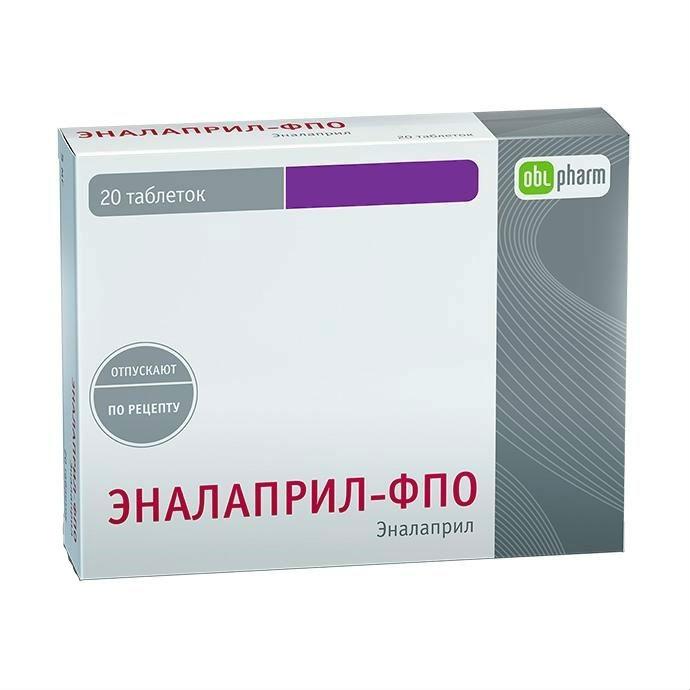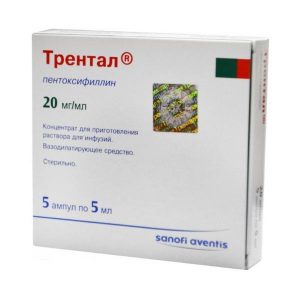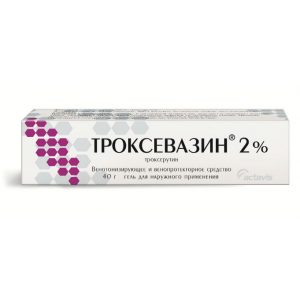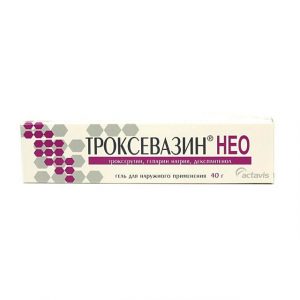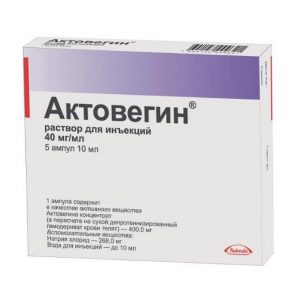Description
Pharmacological action of
Antihypertensive combination drug (ACE blocker + diuretic)
Indications
Arterial hypertension (patients who are shown combination therapy).
Contraindications
– hypersensitivity to drug components or sulfonamide derivatives
– anuria
– severe renal impairment (CC < 30 ml / min) – a history of angioneurotic edema associated with the use of previously ACE inhibitors and sulfonamide derivatives – hereditary or idiopathic angioedema – lactose intolerance, lactase deficiency or maternal lactation – pregnancy ) – children and adolescents under 18 years of age (efficacy and safety not established). Caution is advised to use the drug in the following conditions: bilateral renal artery stenosis, single-kidney stenosis severe aortic and mitral stenosis or hypertrophic obstructive cardiomyopathy coronary artery disease and cerebrovascular disease (including cerebrovascular insufficiency) an excessive decrease in blood pressure can lead to the development of myocardial infarction and stroke chronic heart failure severe atherosclerosis severe autoimmune systemic diseases of the connective tissue (including systemic lupus erythematosus, scleroderma) inhibition of bone marrow hematopoiesis diabetes thiazide diuretics are able to reduce glucose tolerance hyperkalemia condition after kidney transplantation impaired liver and / or kidney function (CC 30-75 ml / min) conditions accompanied by a decrease in BCC (as a result of diuretic therapy, while limiting consumption of salt, diarrhea and vomiting) primary hyperaldosteronism old age. Composition 1 tab. contains: hydrochlorothiazide 12.5 mg, enalapril maleate 20 mg Excipients: lactose monohydrate 18.5 mg, potato starch 10 mg, microcrystalline cellulose 31 mg, povidone 2 mg, sodium sodium hydrogen carbonyl starch 2 mg, sodium carbide 2 mg, sbrlkp talcum 1 mg, magnesium stearate 1 mg. Dosage and administration Assign inside, during or after a meal, take the tablets without chewing, with a small amount of liquid. Initially, adequate doses of the individual components should be determined. The dose should always be selected individually for each patient. The recommended dose is 1 tablet / day. Patients should become in the habit of taking the drug regularly, at the same time, preferably in the morning. In patients undergoing diuretic therapy, it is recommended to cancel treatment or reduce the dose of diuretics at least 3 days before treatment with the drug to prevent the development of symptomatic arterial hypotension. Before starting treatment, kidney function should be examined. Duration of treatment is determined by the physician. If you miss the next dose, you need to take it as soon as possible if there is enough time left before taking the next dose. If several hours remain before taking the next dose, you should wait and take only this dose. You should never double the dose. In patients with renal insufficiency with a CC of 30-75 ml / min, the drug should be used only after preliminary titration of enalapril and hydrochlorothiazide separately, respectively, in the combined doses of enalapril N. In the absence of a therapeutic effect, it is recommended to add another drug or change the therapy. The duration of treatment is not limited. Side effects Classification of the frequency of development of side effects WHO: very often (> 1/10), often ( > 1/100 and <1/10), infrequently (> 1/1000 and <1/100), rarely (> 1/10 000 and <1/1000), very rarely (<1/10 000), the frequency is unknown. From the hemopoietic system: infrequently – anemia rarely – neutropenia, decreased hemoglobin and hematocrit, thrombocytopenia, leukopenia, agranulocytosis, inhibition of bone marrow function, inhibition of bone marrow function, pancytopenia, leukopenia, lymphadenopathy, autoimmune diseases. From the endocrine system: frequency unknown – syndrome of impaired secretion of ADH. From the nervous system: often – headache, depression, fainting, infrequent confusion, drowsiness, insomnia, nervousness, paresthesia, dizziness rarely – sleep disturbances, paresis (due to hypokalemia). From the side of the organ of vision: very often – impaired vision frequency is unknown – xanthopsia. From the cardiovascular system: often – a marked decrease in blood pressure (including orthostatic hypotension), chest pain, rhythm disturbances, tachycardia, angina pectoris infrequently – myocardial infarction or stroke, palpitations rarely – Raynaud’s syndrome frequency is unknown – necrotic angiitis (vasculitis, skin vasculitis). From the respiratory system: very often – coughing often – shortness of breath rarely rhinorrhea, sore throat, hoarseness, bronchospasm rarely pulmonary infiltrates, rhinitis, allergic alveolitis / eosinophilic pneumonia, respiratory distress syndrome (including pneumonitis and pulmonary edema). From the digestive system: very often – nausea often – diarrhea, abdominal pain, taste disorders infrequently – intestinal obstruction, pancreatitis, vomiting, dyspepsia, constipation, anorexia, stomach irritation, dry oral mucosa, peptic ulcer rarely – stomatitis, aphthous ulcers, glossitis, liver failure, hepatitis (hepatocellular or hemolytic), cholestasis, fulminant liver necrosis is very rare – intestinal angioedema. From the skin and subcutaneous tissue: often – skin rash, angioedema of the face, limbs, lips, tongue, glottis, larynx infrequently – increased sweating, skin itching, urticaria, alopecia rarely – erythema multiforme, Stevens-Johnson syndrome, exfoliative dermatitis , toxic epidermal necrolysis, pemphigus, erythroderma, lupus-like skin reactions, exacerbation of systemic lupus erythematosus. From the musculoskeletal system: often – muscle cramps infrequently – arthralgia. From the urinary system: infrequently – impaired renal function, acute renal failure, proteinuria rarely – oliguria, interstitial nephritis. From the reproductive system: infrequently – decreased potency rarely – gynecomastia. Other: very often – asthenia often – fatigue infrequently – muscle cramps, tinnitus, general malaise, fever frequency unknown (for hydrochlorothiazide) – fever, weakness. Laboratory studies: often – hyperkalemia, hypercreatininemia infrequently – hyperuricemia, hyponatremia rarely increased activity of hepatic transaminases, hyperbilirubinemia. When using ACE inhibitors, a symptom complex is described, including fever, serositis, vasculitis, myalgia, myositis, arthralgia, arthritis, a positive test for antinuclear antibodies, an increase in ESR, eosinophilia, leukocytosis, exanthema, photosensitivity reactions or other dermatological disorders. With the simultaneous administration of ACE inhibitors and iv administration of sodium aurothiomalate, a symptom complex has been described, including facial flushing, nausea, vomiting, and arterial hypotension. Overdose Symptoms: increased diuresis, marked decrease in blood pressure with bradycardia or other heart rhythm disturbances, convulsions, impaired consciousness (including coma), acute renal failure, impaired blood circulation and water-electrolyte blood balance. Treatment: the patient is transferred to a horizontal position with raised legs. In mild cases, gastric lavage and ingestion of activated charcoal are indicated, in more serious cases, measures aimed at stabilizing blood pressure – iv administration of plasma substitutes, infusion of 0.9% sodium chloride solution. The patient needs to control the level of blood pressure, heart rate, respiratory rate, serum concentration of urea, creatinine, electrolytes and diuresis, if necessary – iv administration of angiotensin II, hemodialysis (enalaprilat excretion rate – 62 ml / min). Active ingredient enalapril Terms of delivery from pharmacies Prescription Dosage form tablet Obolensky AF Russian
